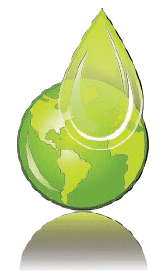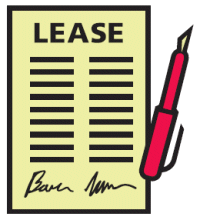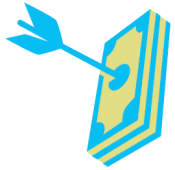

To send a message to an author, click on the author's name at the end of the article.
This Month in Ag Connection | Ag Connection - Other Issues Online
Alternative forages are an important topic in light of the 2012 drought. Many beef cattle producers need to assess what plants currently comprise pastures and hay fields and decide if changes are needed. Producers typically use winter months to gather information on forage options in order to be prepared to act when early spring conditions allow agronomic practices to occur.
Missouri beef producers are fortunate in that dozens of forage species can be
grown in pastures and hay fields. The temptation is to be looking for some new,
magic forage or potion that will improve forage productivity without the
 producer doing anything to change their management techniques. Unfortunately,
most of these magic forages disappoint at some level. So, how should producers
go about selecting forage types and varieties to improve their pastures and hay
fields?
producer doing anything to change their management techniques. Unfortunately,
most of these magic forages disappoint at some level. So, how should producers
go about selecting forage types and varieties to improve their pastures and hay
fields?
In true Extension fashion, here are several questions that producer's need to ask when looking at forage options for their operation. This is not an all- inclusive list, but is intended to get the thought process started.
One starting place is to figure out if forage issues can be solved by changing how the current forage inventory is managed. Can improvements be made in grazing management, fertilizer management, or haying management? Are livestock production management changes possible and will they be helpful? What is the current level of forage management skill? Can new forage management skills be learned and implemented?
Assuming a new forage type can be properly managed, what determines which forage or forages are selected? The following questions come to mind. When is forage needed? What level of forage quality is needed? What is affordable for both establishment and maintenance of the new forage? Is tillable land available? Does the farm infrastructure exist to manage different forage crops and if not, what will be the cost to bring the infrastructure up to speed? Is there independent research data on the forage being considering?
As mentioned previously, there are literally dozens of crops that can be incorporated into a sustainable forage production system. Many times, the success or failure of these crops boils down to following simple, proven management practices. Select forage crops that fill voids in your current forage system, and have a proven track record of production and management requirements. Then follow those management guidelines.
Additional information can be found on the MU Extension Forage and Research website: http://forage.missouri.edu
Source: Gene Schmitz, Livestock Specialist
This Month in Ag Connection | Ag Connection - Other Issues Online
In recent years the cost of both land and equipment has increased at a fast pace. Leasing is one method to control productive assets without actually owning them. Many farmers are familiar with leasing land, but leasing equipment is less popular and involves different factors.

Equipment lease programs can change year to year. Equipment manufacturers may change lease programs to move more equipment. It is important to analyze the lease to determine if it is better to lease or purchase. It is important to continue analyzing the lease year to year since the content of the lease may change.
Any lease should always contain items that explain the terms and obligations of both parties. The following are some items suggested for equipment leases:
Typically when a farmer enters into a lease for a specific piece of equipment, a sale occurs behind the scene. The equipment dealer sells the piece of equipment to a financing company. The financing company becomes the lessor, and then leases the equipment to the farmer who is then the lessee signing the lease agreement. The farmer typically signs the contract at the equipment dealership. Basically, the equipment dealer is the intermediary between the farmer and the financial institution.
Since the dealer is actually selling the equipment to a financial institution there are likely limitations on what can be negotiated. The most common items that can be negotiated are base hours and duration. It is important to have a good estimate on the number of hours the equipment will be needed each year. It is common that the hourly rate for exceeding base hours is high. It is to the farmer's advantage to compare moving up to the next level of base hours versus exceeding the lower level.
Other items to think about when entering a lease is the trade-in value if that is an option, impacts to your cash flow, property taxes, termination clause of lease and income tax.
Dr. Ray Massey with MU Extension has created a spreadsheet to help the decision making process called "Equipment Lease Analyzer". The tool as well as additional information can be found online at http://extension.missouri.edu/p/G429
Source: Mary Sobba, Ag Business Specialist
This Month in Ag Connection | Ag Connection - Other Issues Online
Proper calibration of a sprayer to achieve accurate, safe, and efficient application of crop protection products should be your primary goal as a pesticide applicator. Calibration steps should be taken to ensure the desired amount of spray material is being dispersed according to label recommendations.
The steps needed to properly calibrate the sprayer involve a calculation to determine the nozzle flow rate required to deliver the recommended carrier application volume in gallons per acre (GPA). The formula used,

incorporates the desired application volume (GPA), an appropriate ground speed in miles per hour (MPH), and nozzle spacing in inches (W) on the boom resulting in gallons per minute (GPM) flow rate per nozzle. The proper orifice size for the nozzle type and pressure is then selected from the appropriate spray nozzle chart. Then the spray process must take place maintaining the calibrated speed and pressure to obtain the desired application volume.
Most applicators are familiar with how to use flow rate charts from spray equipment catalogs and websites to determine the nozzle orifice size needed as described above. Applicators may also be comfortable in making those applications with the benefit of an automatic rate controller to help improve the uniformity of application volume across the field.

However, a sprayer calibrated in this manner does not guarantee the application will achieve its highest level of efficacy or minimize drift. The next step in calibration is designed to achieve this, but is not commonly familiar to many applicators. This calibration step requires applicators to review droplet size charts to choose nozzle types, sizes, and pressure levels that will meet a specified droplet classification listed on the label.
To help applicators select nozzles according to droplet size, spray equipment manufacturers are including droplet size charts with their respective catalogs and websites. These charts classify the droplet size from a given nozzle at various pressure levels according to a standard developed by the American Society of Agricultural and Biological Engineers (ASABE). The standard (S-572) rates droplets as very fine, fine, medium, coarse, very coarse, and extra coarse.
The droplet size created by a nozzle becomes very important when the efficacy of a particular plant protection product depends on coverage, or when the minimization of material leaving the target area is a priority. Droplet specifications given on the pesticide label are provided to guide applicators in selecting how to best apply that material. Thus, consulting the nozzle manufacturers' droplet sizing charts is essential. Applicators should also remember the effect of changing speed when using an automatic rate controller. Major speed fluctuations will cause pressure adjustments that, while maintaining the GPA, may shift the droplet spectrum resulting in possible off-label applications.
Obviously the nozzle type selected will influence coverage as well as drift. For some fungicide and/or insecticide application scenarios the medium/fine option would be very close to the desired specifications for adequate coverage and efficacy. However, when applying certain herbicides, a larger droplet spectrum may be essential to minimize the drift potential.
An influencing factor then becomes the necessity for applicators to have a good knowledge of the 'mode of action' for the crop protection product being used. It is commonly thought that a systemic material such as glyphosate can work well with a medium, coarse, or maybe even a very coarse droplet spectrum while a contact material such as Libertyr will need a droplet spectrum promoting more leaf coverage, i.e. medium droplets.
Learning to use droplet sizing charts is essential for proper pest control and minimize drift. For further information about droplet size calibration, refer to the Kansas State University publication - MF2869: Droplet Size Calibration: A New Approach to Effective Spraying - http://w ww.ksre.ksu.edu/bookstore/Item.aspx?catId=381&pubId=2999
Source: Kent Shannon, Natural Resource Engineer Specialist
This Month in Ag Connection | Ag Connection - Other Issues Online
Bull leasing might be a great option for producers interested in genetic improvement without capital investment, operating expenses, and facilities needed for keeping a breeding bull(s). Leasing allows producers to use higher dollar value bulls (and superior genetics in many cases) than producers might be willing to pay if buying bulls. When looking at leasing as an option, compare the costs and returns from leasing a bull versus buying.

A written agreement should assign the responsibilities of all the lease participants with enough detail to answer any problems/questions that could arise if for example, the bull gets sick, dies or is determined to be an unsatisfactory breeder. If any expenses need to be shared, then the contribution of each party should be decided up front. Responsibility for an unexpected loss should be defined BEFORE any lease is signed, so both the bull's owner and leasing party are protected, just in case something bad happens.
Other reasons producers might consider leasing over purchasing a bull are; reducing breeding costs per cow, eliminating the need to winter bulls, the ability to have a few more cows on existing feed resources and increased flexibility to change breeds and trait emphasis in a herd, versus owning bulls. In smaller herds, it could make more sense for producers to lease over buying bulls, especially if the herd is doing an AI program why not lease bulls for clean-up?
What does it cost?

When producers contemplate purchasing versus leasing a bull, they need to investigate factors besides just the purchase price, salvage value and number of years the bull was used. For example, if a bull was purchased for $2,000, used for 4 years and was sold at auction for $800.00 the annual cost of service would be calculated as $2,000.00 -$800.00 =$1200.00/ 4 years= $300.00 per year, which isn't entirely correct. Using this calculation does not consider the actual cost of ownership. Producers need to also add other direct costs to this; such as annual interest on the purchase price if the money was borrowed, property taxes, maintenance costs (feed, pasture, mineral, supplement, veterinary costs, etc.), premature loss from service due to an injury, infertility or death, annual breeding soundness exams, maintaining a separate area for bulls to keep them away from cows/heifers and the possibility the producer could run a few more cows.
Producers should also consider that they could have access to better genetics when comparing leasing versus buying bulls. If leased bulls have genetics capable of increasing weaning weights, decreasing dystocia, increasing carcass characteristics in a herd at a decreased cost than that makes leasing bulls an even better option. It might be too late to consider leasing this year, but if cattle prices and feed resources stay high, producers should considered this for next year.
Two Extension publications on bull purchasing and management can be found at:
http://www.uaex.edu/Other_Areas/publications/PDF/FSA-3072.pdf
http://pods.dasnr.okstate.edu/docushare/dsweb/Get/Rendition-4879
Source: Wendy Rapp, Livestock Specialist
This Month in Ag Connection | Ag Connection - Other Issues Online
Publishing Information
Ag Connection is published monthly for Northeast and Central areas of Missouri producers and is supported by the University of Missouri Extension, the Missouri Agricultural Experiment Station, and the MU College of Agriculture, Food and Natural Resources. Managing Editor: Mary Sobba.